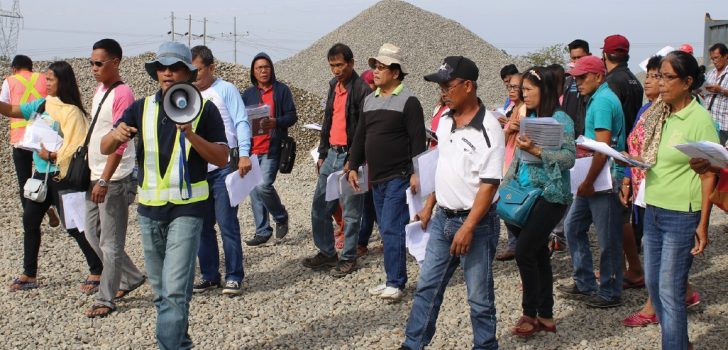
RPCO2 trains barangay representatives for citizens monitoring
Eighty participants, all local officials coming from the different barangays of Amulung, Solana, Alcala and Tuguegarao City, attended the Training on the Involvement of Citizens in the Monitoring of Rural Infrastructure Subproject conducted by the Regional Project Coordination Office (RPCO2).
“Your vigilance as officials of the barangays within the road influence area is needed for us to attain what we all aspire for, quality subproject implementation,” Mr. Hector U. Tabbun, InfoACE Unit Head and RAFIS Chief said. “Your involvement in this endeavor is of great help.”
“Your presence today manifests your eagerness to safeguard the road projects traversing your respective barangays,” RTD Robert Olinares, RPCO2 M&E Unit Head said in his message. “It is just fitting and proper because you are the direct beneficiaries.”
“With the number of subprojects being implemented here in Cagayan, your role as members of the Community Monitoring Team will help project implementers a lot,” Engr. Jovel Dizon said, explaining the significance of CMT. “As beneficiaries, you have the right to remind the site engineers and to coordinate with the Provincial Project Management and Implementing Unit (PPMIUs).”
“The framework that we are going to present is not to override Philippine Rural Development Project’s (PRDP’s) existing monitoring system. Rather, it is aimed to complement and reinforce it,” she furthered.
Romille David explained the use of Geotagging as a monitoring tool and feedback mechanism, saying it is not as difficult as others think.
After installing the software, PRDP Go! in the mobile phones of the participants, he demonstrated how they could capture photos, aligning his lecture on PRDP’s Applied Geomapping Technology (AGT), thus allowing the participants to appreciate the seemingly complicated operations.
In his lecture, Engr. Dennis Flores clarified the roles of the beneficiaries in achieving PRDP’s advocacy on accountability, transparency, and governance.
He likewise enumerated and explained the processes and phases of roads and bridges construction and the significance of the checklist to be used in monitoring the subprojects.
“Your role in monitoring will help us ensure that subproject implementation is on time and of good quality,” he stressed.
Explaining that development is good but not at the expense of people and environment, Mr. Emmanuel Aragon discussed three frameworks of Social and Environmental Safeguards.
“We have three frameworks,” he said. “The environmental framework, the social framework, and the Grievance and Redress Mechanism (GRM.)”
Mr. Michael Francis Falconi, SES National Project Coordination Office (NPCO), expounded on how GRM plays a vital role in the Community Monitoring Tool.
He divided the participants into groups to prepare them for a simultaneous field activity in an ongoing farm-to-market road subproject.
Guided by the facilitators, the participants experienced Geotagging and using the checklist at Namabbalan Norte -Baliuag-Bical-Cabbo FMR, the site for the field activities.
Lecturers who came from the Project Support Office (PSO) were Engr. Jovel Dizon, M&E; Engr. Dennis Flores, I-BUILD; Engr. Romylle David, GGU; Mr. Emmanuel Aragon, SES; and Mr. Michael Francis Falconi SES, representing the National Project Coordination Office (NPCO). (Ferdinand N. Cortez, RPCO2 InfoACE Unit)
